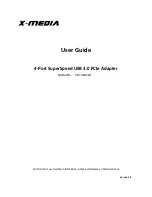
S e n d d o c u m e n t a t i o n c o m m e n t s t o m d s f e e d b a c k - d o c @ c i s c o . c o m
12-7
Cisco MDS 9000 Family CLI Configuration Guide
OL-16184-01, Cisco MDS SAN-OS Release 3.x
Chapter 12 Configuring Interfaces
Fibre Channel Interfaces
N Port Identifier Virtualization
N port identifier virtualization (NPIV) provides a means to assign multiple FC IDs to a single N port.
This feature allows multiple applications on the N port to use different identifiers and allows access
control, zoning, and port security to be implemented at the application level.
Figure 12-2
shows an
example application using NPIV.
Figure 12-2
NPIV Example
You must globally enable NPIV for all VSANs on the MDS switch to allow the NPIV-enabled
applications to use multiple N port identifiers.
Note
All of the N port identifiers are allocated in the same VSAN.
About Interface States
The interface state depends on the administrative configuration of the interface and the dynamic state of
the physical link.
Administrative States
The administrative state refers to the administrative configuration of the interface as described in
Table 12-1
.
Operational States
The operational state indicates the current operational state of the interface as described in
Table 12-2
.
Web
Node
N port
controller
LUN 1
N_Port_ID 1
LUN 2
N_Port_ID 2
LUN 3
N_Port_ID 3
Application
server
MDS switch
F port
154019
Table 12-1
Administrative States
Administrative State
Description
Up
Interface is enabled.
Down
Interface is disabled. If you administratively disable an interface by shutting
down that interface, the physical link layer state change is ignored.
















































